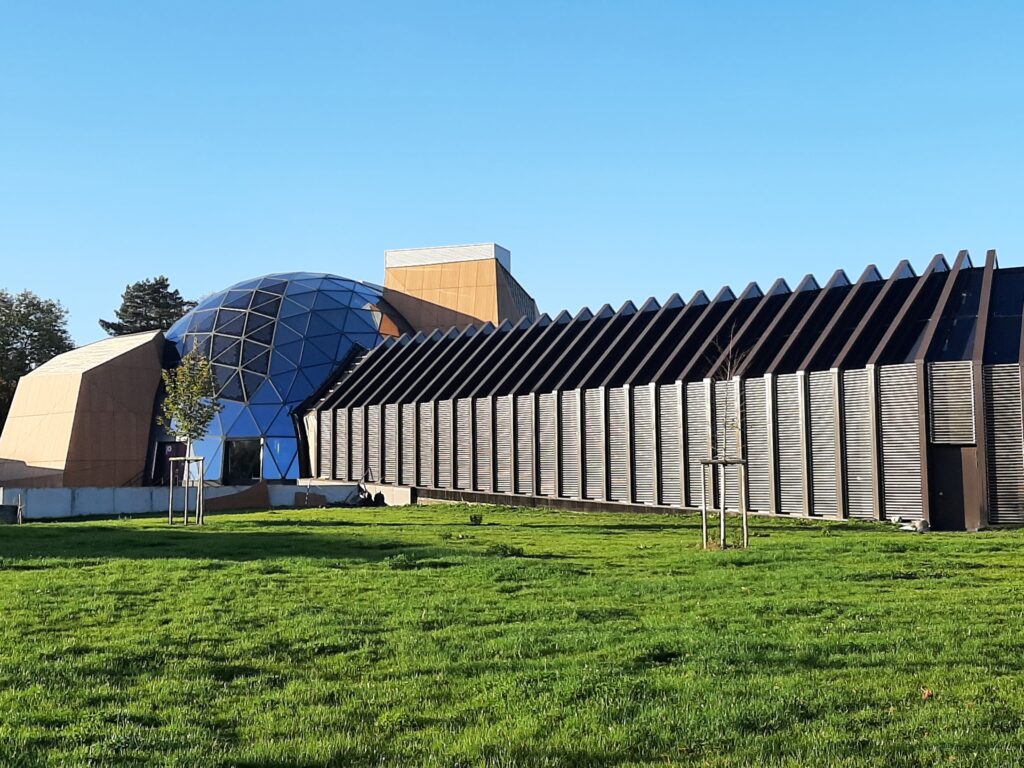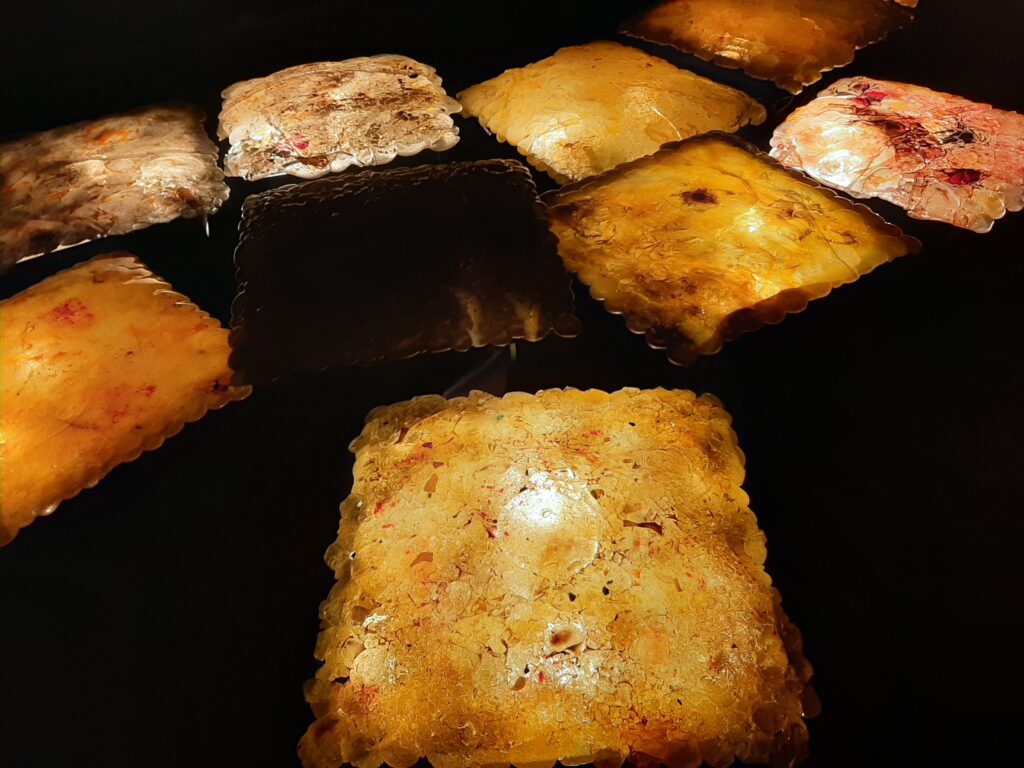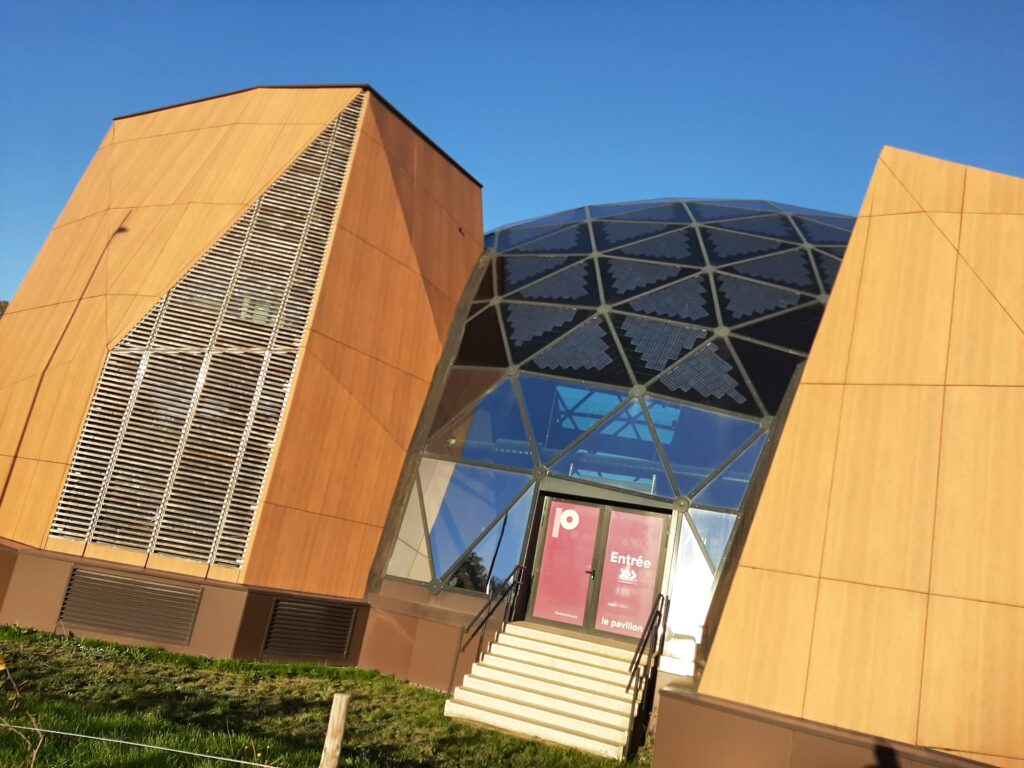My love at first sight in 2021, Le Pavillon opened on the highest point of the capital of Wallonia, in the glorious city of Namur. As its founders joke: ‘despite its appearance, which resembles an astronomical station, the Pavillon did not come from Mars, but from Milan.’ Namur-based architect Patrick Génard and his Barcelona-based architectural firm Patrick Génard & Asociados created the Belgian Pavilion in such an interplanetary style for the 2015 World Expo in Milan. ‘Le Pavillon’ teleported to the Citadel district in Namur, the architect’s homeland, and became an Art Centre where art meets science and they are both with a public demand (for an ecological, comfortable, socially just future life). As part of the 13th edition of the KIKK festival at ‘Le Pavillon’, we saw the exhibition ‘Stellar Scape’ (opened in June 2024). I must say that the ‘cosmic landscape’ in the Art Centre is very interesting. We are entering the latest era of space exploration, and art based on scientific discoveries helps to analyse the challenges – ethical, geopolitical, ecological.



My three highlights:
At the very entrance to the exhibition, visitors are greeted by one of the ‘Kongo Austronauts’, a Congolese astronaut robot created by the French artist duo Michel Ekeba and Eléonore Hellio from some electronic rubbish, i.e. recycled parts of computers, phones, electronic equipment from Europe in and around the Congolese capital Kinshasa. Africa in the post-colonial era has become a dumping ground for the most environmentally toxic waste.



Scottish artist Katie Paterson used Beethoven’s ‘Moonlight Sonata’, a favourite piece of music of the ‘leader of the world proletariat’ Ulyanov-Lenin, in her project. She converted its notes into Morse code and transmitted it to the surface of the Moon. Reflected by the craters and uneven surface of the Sun’s satellite, the sounds of the music returned to Earth in a distorted form. Listening to a mechanical piano, you will generally recognise the ‘Moonlight Sonata’, but the pauses and shifts in sound will confuse your hearing.



And the most humane project of the exhibition ‘Moon Goose colony’ is multimedia. German artist Agnes Meyer-Brandis was inspired by the novel ‘Man on the Moon’ by British writer Francis Godwin (17th century), a forerunner of science fiction. The protagonist flies to the moon in a chariot pulled by moon geese. Now, four centuries later, the artist has combined fiction, science, poetic vision and legends from the past, present and future to set off on a journey following the flapping wings of this feathered bird, populous in the folklore of all nations. In an ecologically respectful analogue, she took on the tender responsibility of mother goose, raising and training eleven geese from hatching and naming them after prominent astronauts (the firstborn was named Yuri, the first female Valentina, alongside Neil and other astronauts). The goose colony made several landings on the ‘moon’. It is touching to watch the goose wedge semen behind Agnes on the notionally ‘lunar surface’. A humanistic project with a lot of humour. I personally associate it with ‘exaggeration of the feat of the first cosmonaut from a peasant family as a symbol of the victory of socialism in the USSR’, whereas the scientific and moral feat was performed by a nobleman, constructer Sergei Korolev with a broken jaw in the NKVD. With all my sympathy for the smile and personality of Yuri Gagarin.




